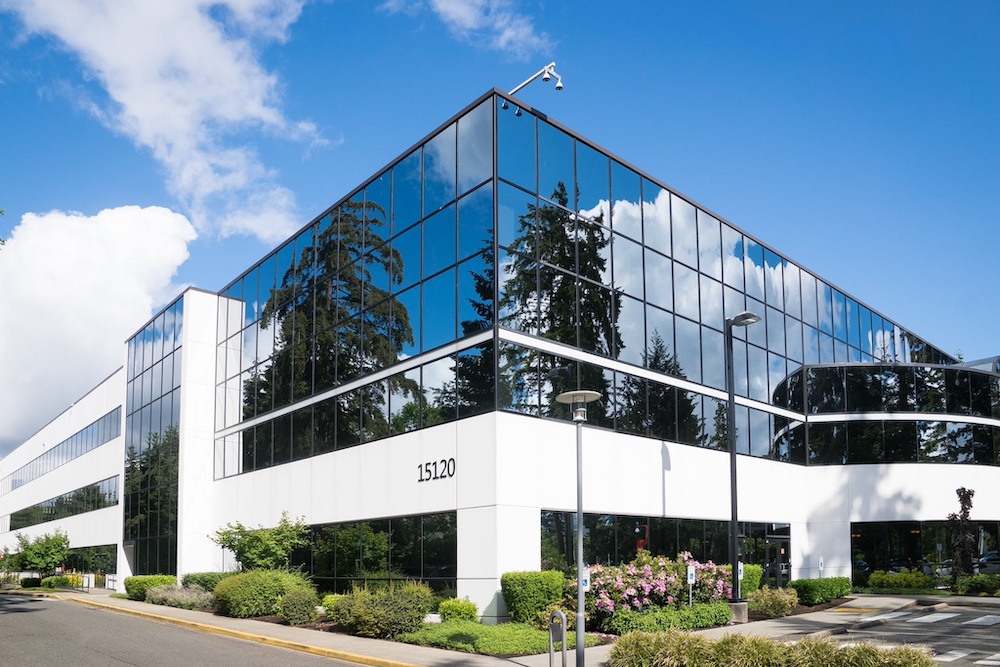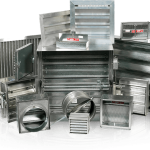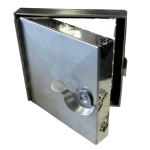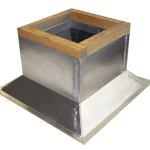
In the ever-evolving landscape of building design, ensuring a safe and comfortable indoor environment, with the integration of backdraft dampers, stands as an uncompromising priority. At Lloyd Industries, we understand the pivotal role that backdraft dampers play in achieving this goal. As industry leaders, we recognize the significance of incorporating these essential components meticulously, creating spaces where individuals can truly breathe easily and stay safe.
Understanding Backdraft Dampers
Backdraft dampers form an integral part of building ventilation systems, meticulously engineered to control the flow of air and prevent undesirable reversals. Functioning as silent guardians, these dampers ensure that the air within a structure moves in the intended direction, effectively thwarting the intrusion of external elements.
Mechanism of Operation
The mechanism behind backdraft dampers is elegantly simple yet incredibly effective. Installed within ventilation ducts or openings, these dampers permit airflow in one direction while promptly closing to obstruct reverse airflow. This intricate process is particularly crucial in environments where maintaining air quality and preventing the entry of contaminants are paramount concerns.
The Importance of Backdraft Dampers in Building Safety
Fire Protection
Fire protection stands out as one of the primary roles of backdraft dampers. In the unfortunate event of a fire, these dampers act as barriers, preventing the unchecked spread of smoke and flames through ventilation systems. By autonomously closing in response to elevated temperatures, they play a pivotal role in compartmentalizing fire hazards and safeguarding the occupants within a structure.
Contaminant Control
In spaces where air quality is of utmost importance, such as laboratories or medical facilities, backdraft dampers become indispensable. These dampers effectively control the entry of contaminants, ensuring that the air circulating within the building remains clean and free from unwanted particles.
Advancements in Backdraft Damper Technology
Smart Dampers
As technology continues to advance, so does the realm of backdraft dampers. The emergence of smart dampers brings an additional layer of sophistication to building design. These dampers, equipped with sensors and automated controls, can adapt in real-time to changing conditions, providing an even more responsive and efficient solution for maintaining optimal indoor air quality.
Enhanced Energy Efficiency
Modern backdraft dampers are designed with a keen focus on energy efficiency. By minimizing air leaks and optimizing airflow, these dampers contribute to the overall energy performance of a building. This not only aligns with sustainability goals but also leads to cost savings in the long run.
Selecting the Right Backdraft Dampers for Your Project
Selecting the right backdraft dampers for your building project is a critical decision that involves considering several factors to ensure optimal performance and safety. One key consideration is the type of building and its specific ventilation requirements. Different structures, such as commercial buildings, industrial facilities, or residential complexes, may have varying needs, necessitating tailored solutions.
The location of the backdraft dampers within the ventilation system is another crucial factor. Understanding the airflow patterns and identifying potential points of reversal is essential for strategic placement. This ensures that the dampers effectively serve their purpose in preventing unwanted air movement, especially during fluctuating pressure conditions.
Additionally, the environmental conditions of the building site should be taken into account. Factors such as temperature extremes, humidity levels, and exposure to corrosive elements can impact the longevity and functionality of backdraft dampers. Choosing dampers constructed from durable materials and equipped with corrosion-resistant coatings can enhance their durability and reliability in diverse environmental conditions.
Consideration of the specific industry standards and regulations applicable to your project is also paramount. Compliance with these standards not only ensures the safety of occupants but also contributes to the overall efficiency and longevity of the ventilation system. Lloyd Industries is committed to providing backdraft dampers that meet or exceed industry standards, offering peace of mind and confidence in your choice.
Furthermore, the ease of maintenance and accessibility of backdraft dampers should be taken into account during the selection process. Opting for dampers designed for convenient inspection and maintenance can reduce downtime and operational disruptions, ensuring the long-term effectiveness of the ventilation system.
In conclusion, selecting the right backdraft dampers requires a comprehensive understanding of the unique requirements of your building project. Lloyd Industries, with its extensive experience and commitment to excellence, offers a range of backdraft dampers designed to meet the diverse needs of different industries. Contact us today for personalized guidance and discover how Lloyd Industries can be your trusted partner in creating safer, more comfortable, and efficiently ventilated spaces.
Contact Lloyd Industries for Your Backdraft Damper Needs
In conclusion, the significance of backdraft dampers in building design cannot be overstated. As you embark on your journey to create safe, comfortable, and efficient spaces, ensure that you choose a reliable partner. At Lloyd Industries, we take pride in offering top-notch backdraft dampers that meet the highest industry standards. For personalized solutions and expert guidance, contact us today. Let Lloyd Industries be your trusted ally in creating spaces where individuals can truly breathe easy and stay safe.
Recent Posts
- Static vs. Dynamic Fire Dampers: Choosing the Right Solution for Your Building
- Breathe Easy, Stay Safe: The Importance of Backdraft Dampers in Building Design
- The Importance of Regular Fire Damper Maintenance
- Backdraft Dampers in Commercial Kitchens: Ensuring Ventilation Compliance
- Equipment Support Rails: Proper Installation and Maintenance
Categories
Archives
- 2024
- January 2024 (1)February 2024 (1)March 2024 (1)May 2024 (1)
- 2023
- January 2023 (4)February 2023 (1)March 2023 (5)April 2023 (4)May 2023 (5)June 2023 (3)July 2023 (1)August 2023 (1)September 2023 (3)October 2023 (1)November 2023 (2)December 2023 (1)
- 2022
- January 2022 (2)February 2022 (1)March 2022 (3)April 2022 (2)July 2022 (2)August 2022 (3)October 2022 (2)November 2022 (3)December 2022 (4)
- 2021
- January 2021 (2)February 2021 (2)March 2021 (2)April 2021 (2)May 2021 (1)June 2021 (3)July 2021 (1)August 2021 (2)September 2021 (1)October 2021 (2)November 2021 (2)December 2021 (2)
- 2020
- January 2020 (2)February 2020 (2)March 2020 (2)April 2020 (3)May 2020 (2)June 2020 (2)July 2020 (3)August 2020 (1)September 2020 (3)October 2020 (2)November 2020 (2)December 2020 (2)
- 2019
- January 2019 (1)May 2019 (1)June 2019 (1)August 2019 (1)September 2019 (2)October 2019 (1)November 2019 (2)December 2019 (2)
- 2018
- January 2018 (1)February 2018 (1)March 2018 (1)May 2018 (1)July 2018 (2)August 2018 (1)October 2018 (2)
- 2017
- November 2017 (3)
- 2016
- 2015
- 2014
- 2013
- 2012
- 2011
- 2010
- 2009
- 2008
- 2007
- 2006
- 2005
- 2004
- 2003
- 2002
- 2001
- 2000
- 1999
- 1998
- 1997
- 1996
- 1995
- 1994
- 1993
- 1992
- 1991
- 1990
- 1989
- 1988
- 1987
- 1986
- 1985
- 1984
- 1983
- 1982
- 1981
- 1980
- 1979
- 1978
- 1977
- 1976
- 1975
- 1974
- 1973
- 1972
- 1971
- 1970
- 1969
- 1968
- 1967
- 1966
- 1965
- 1964
- 1963
- 1962
- 1961
- 1960
- 1959
- 1958
- 1957
- 1956
- 1955
- 1954
- 1953
- 1952
- 1951
- 1950




